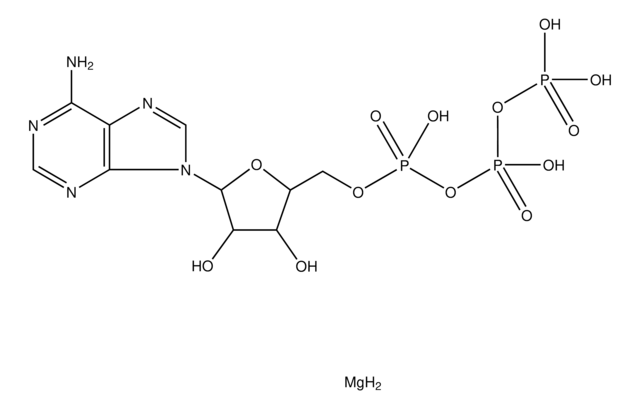V900429
N-Acetyl-L-cysteine
98%, Vetec™
Synonym(s):
LNAC, NAC
Sign Into View Organizational & Contract Pricing
All Photos(2)
About This Item
Linear Formula:
HSCH2CH(NHCOCH3)CO2H
CAS Number:
Molecular Weight:
163.19
Beilstein:
1724426
EC Number:
MDL number:
UNSPSC Code:
12352209
PubChem Substance ID:
Recommended Products
Product Name
N-Acetyl-L-cysteine, Vetec™, reagent grade, 98%
grade
reagent grade
product line
Vetec™
Assay
98%
form
powder
color
white to off-white
mp
106-108 °C (lit.)
application(s)
cell analysis
storage temp.
2-8°C
SMILES string
CC(=O)N[C@@H](CS)C(O)=O
InChI
1S/C5H9NO3S/c1-3(7)6-4(2-10)5(8)9/h4,10H,2H2,1H3,(H,6,7)(H,8,9)/t4-/m0/s1
InChI key
PWKSKIMOESPYIA-BYPYZUCNSA-N
Looking for similar products? Visit Product Comparison Guide
Application
- Antioxidant Assay Development: N-Acetyl-L-cysteine (NAC) is used in the metabolic activation and assessment of cytotoxicity of gramine mediated by CYP3A, showcasing its importance in biochemical assays that measure oxidative stress, a critical factor in IVD reagent development (Gao et al., 2024).
- Cell Differentiation and NF-κB Inhibition: NAC′s role extends to inducing oxidative stress and inhibiting NF-κB pathways, which is crucial for the differentiation of cells in AML treatment. This application demonstrates NAC′s utility in clinical diagnostic reagents aimed at cancer treatment and research (Silva et al., 2024).
- Liver Injury Alleviation: Highlighting its therapeutic applications, NAC is used in alleviating acetaminophen overdose-induced liver injury, underlining its potential use in clinical settings and importance in developing therapeutic IVD assays (Chen et al., 2024).
- Enhanced Cancer Treatment Efficacy: Employed in combination therapies, NAC is used to treat posterior gastric pseudomyxoma peritonei, offering insights into its role as a biochemical agent that enhances the efficacy of cancer treatments in diagnostic and therapeutic applications (Sun et al., 2024).
- Regulation of Cell Cycle and Autophagy: NAC′s interactions with 1-Methoxyisobrassinin in ovarian cancer cells illustrate its capability to modulate cell cycle regulation, apoptosis, and autophagy, underpinning its significant role in the development of biomarker detection assays and other IVD products (Zigová et al., 2024).
Biochem/physiol Actions
Antioxidant and mucolytic agent. Increases cellular pools of free radical scavengers. Reported to prevent apoptosis in neuronal cells but induce apoptosis in smooth muscle cells. Inhibits HIV replication. May serve as a substrate for microsomal glutathione transferase.
Legal Information
Vetec is a trademark of Merck KGaA, Darmstadt, Germany
Signal Word
Warning
Hazard Statements
Precautionary Statements
Hazard Classifications
Eye Irrit. 2
Storage Class Code
13 - Non Combustible Solids
WGK
WGK 2
Flash Point(F)
Not applicable
Flash Point(C)
Not applicable
Choose from one of the most recent versions:
Already Own This Product?
Find documentation for the products that you have recently purchased in the Document Library.
Suzanne M Cloonan et al.
Journal of medicinal chemistry, 58(11), 4494-4505 (2015-05-12)
Ruthenium polypyridyl complexes show great promise as new photodynamic therapy (PDT) agents. However, a lack of detailed understanding of their mode of action in cells poses a challenge to their development. We have designed a new Ru(II) PDT candidate that
Yuval Samuni et al.
Biochimica et biophysica acta, 1830(8), 4117-4129 (2013-04-27)
N-acetylcysteine (NAC) has been in clinical practice for several decades. It has been used as a mucolytic agent and for the treatment of numerous disorders including paracetamol intoxication, doxorubicin cardiotoxicity, ischemia-reperfusion cardiac injury, acute respiratory distress syndrome, bronchitis, chemotherapy-induced toxicity
Michael Berk et al.
Trends in pharmacological sciences, 34(3), 167-177 (2013-02-02)
N-Acetylcysteine (NAC) targets a diverse array of factors germane to the pathophysiology of multiple neuropsychiatric disorders including glutamatergic transmission, the antioxidant glutathione, neurotrophins, apoptosis, mitochondrial function, and inflammatory pathways. This review summarises the areas where the mechanisms of action of
Luigi Franchi et al.
Journal of immunology (Baltimore, Md. : 1950), 193(8), 4214-4222 (2014-09-17)
The nucleotide-binding oligomerization domain-like receptor pyrin domain-containing 3 (Nlrp3) inflammasome plays an important role in inflammation by controlling the maturation and secretion of the cytokines IL-1β and IL-18 in response to multiple stimuli including pore-forming toxins, particulate matter, and ATP.
Matthew Loxham et al.
Toxicological sciences : an official journal of the Society of Toxicology, 145(1), 98-107 (2015-02-13)
We have previously shown that underground railway particulate matter (PM) is rich in iron and other transition metals across coarse (PM10-2.5), fine (PM2.5), and quasi-ultrafine (PM0.18) fractions and is able to generate reactive oxygen species (ROS). However, there is little
Our team of scientists has experience in all areas of research including Life Science, Material Science, Chemical Synthesis, Chromatography, Analytical and many others.
Contact Technical Service





